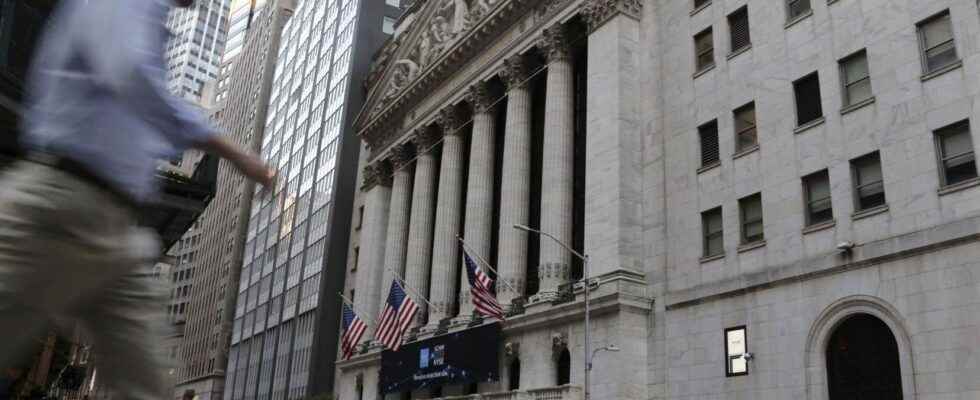Determined to fight against still high inflation, the American Central Bank (Fed) announced on Wednesday a further sharp increase in its rates, by three quarters of a percentage point, and warned that it now anticipates near-zero growth in 2022. .
The Fed’s main policy rate now stands in a range of 3.00 to 3.25%, the powerful institution announced in a press release.
This is the third time in a row that the Fed has made a hike of this magnitude, after a more usual first hike of a quarter point in March, and a hike of half a point in May.
And it anticipates that additional increases will be necessary in 2022, it is indicated in the press release, until raising the key rate by another percentage point.
Raising the key rate increases the interest rates of various loans to individuals and professionals, in order to slow down economic activity, and therefore to ease the pressure on prices.
Mortgage rates, for example, have risen since the beginning of the year, and have just exceeded 6% for a 30-year loan, for the first time since 2008. This is driving down sales in this sector, which had displayed insolent good health since the start of the pandemic.
Slowdown in inflation in 2023
The meeting of the Monetary Policy Committee (FOMC), the decision-making body of the Fed, began on Tuesday. The institution’s president, Jerome Powell, will hold a press conference at 2:30 p.m.
The Federal Reserve took the opportunity to update its economic forecasts, and now anticipates near-zero GDP growth in 2022, when it was forecasting +1.7% in June. She sees it then rebound to 1.2% in 2023, less strong, however, than the 1.7% growth she expected in June for next year.
Inflation forecasts, on the other hand, remain close to what was expected in June: 5.4% in 2022 (vs. 5.2%) for PCE inflation, before slowing sharply in 2023, to 2.8% (compared to 2.6% previously).
The Fed favors this inflation index, which stood at 6.3% over one year in July, according to the most recent figure available, to the CPI index, which refers to the indexation of pensions in particular.
Admittedly, this slowed down in August in the United States, thanks to the drop in gasoline prices, but, at 8.3% over one year in August, showed still very strong pressure on prices, with generalized inflation.
Small rise in unemployment
But this voluntary slowdown in the economy is very delicate, because too much of a brake could tip the United States into the recession which is already hanging over the entire world economy.
The excellent health of the job market gives the Fed leeway to act aggressively.
The current unemployment rate is one of the lowest in 50 years, and there are not enough workers to fill all the vacancies.
The unemployment rate, now at 3.7%, is expected to increase very slightly under the effect of the rate hike, to 3.8% in 2022, close to the 3.7% previously expected, before reaching 4 .4% in 2023 (compared to 3.9% expected in June).
The powerful institution has hammered it: the fight against inflation is its priority. Letting it take hold would imply even more painful measures for households and businesses, as was the case 40 years ago, after years of soaring prices, sometimes approaching 15%.
The U.S. central bank, like its counterparts around the world, is trying to rein in inflation caused by supply chain disruptions related to COVID-19, and exacerbated by rising energy and oil prices. food with the war in Ukraine.
They are numerous to meet this week, in particular, Thursday, the Bank of England (BoE) and that of Japan (BoJ). Tuesday, the Bank of Sweden, the Riksbank, had created the surprise with an unprecedented increase of one point.
In early September, the European Central Bank (ECB) raised its rates by three-quarters of a percentage point, unprecedented.
